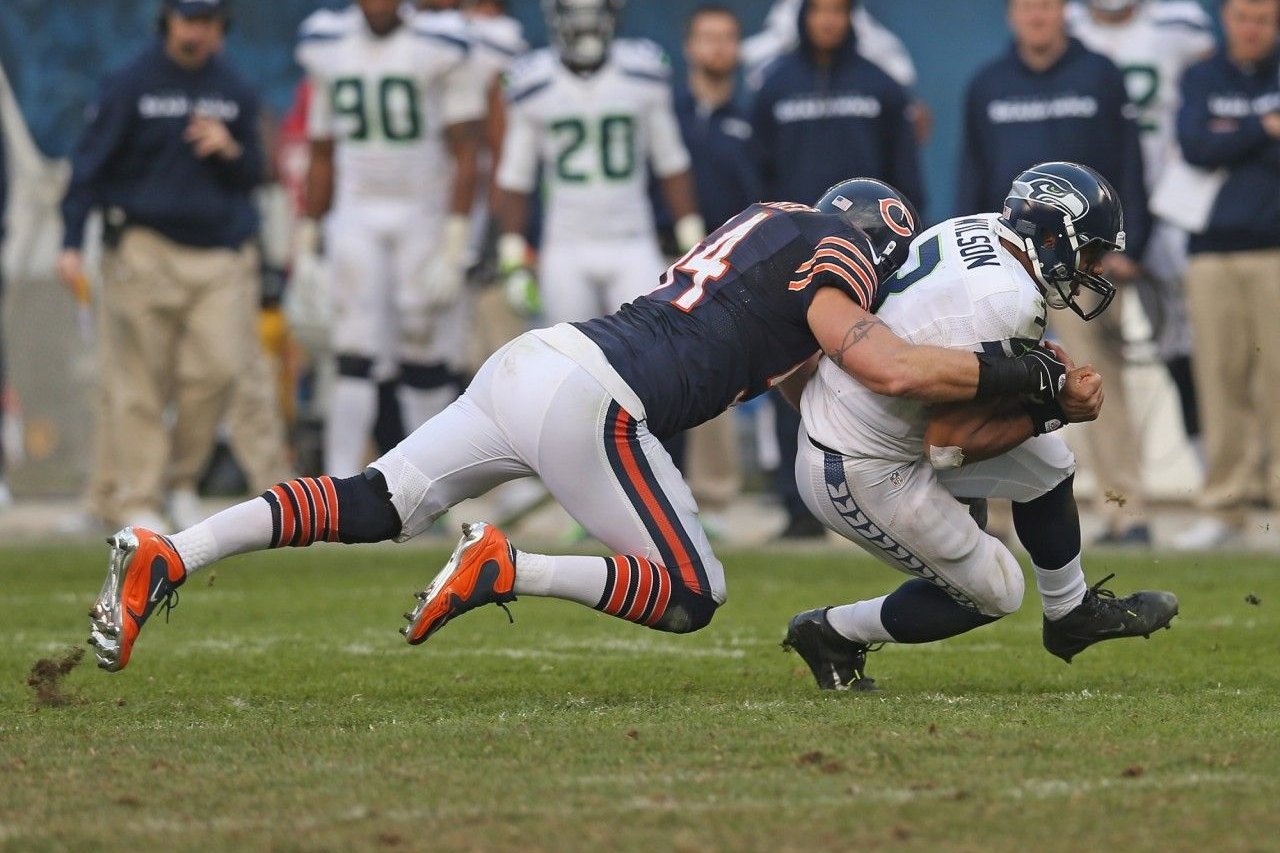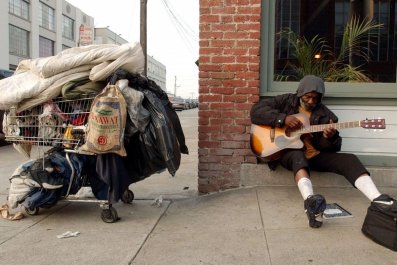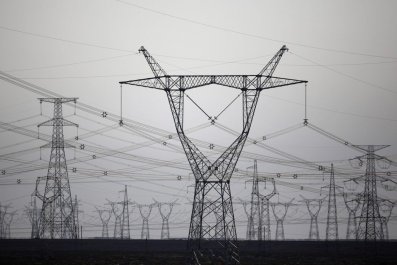Once upon a time in the National Football League, quarterback was the stuff of boyhood dreams and middle linebacker the stuff of nightmares. More than just football's most iconic position on defense, middle linebacker was a harrowing Halloween mask.
Jack Lambert's neck roll and toothless scowl still causes men of a certain age to shudder. Ray Nitschke bore more than a passing resemblance to Frankenstein's monster and was equally indestructible: A set of bleachers collapsed upon the Green Bay Packer Hall of Famer one day, and he did not miss practice. In 1960, Chuck Bednarik — aptly nicknamed "Concrete Charlie" — laid out Giants running back Frank Gifford, knocking him not only out of the game but also out of the entire next season.
Once, they were monsters of mayhem, but in today's NFL, middle linebackers are becoming ghosts.
With the retirement this year of the Chicago Bears' Brian Urlacher and the Baltimore Ravens' Ray Lewis (arguably the greatest middle linebacker of them all), a huge hole has been left in the middle of the defense. That void is increasingly being filled by a fifth or even a sixth defensive back (creating lineups known in gridiron parlance as a "nickel package" and a "dime package", respectively) as defenses attempt to keep pace with the game's increasingly aerial nature.
"If you look at where the league is and where we are, 65% of our snaps last year were nickel," said John Elway, the Denver Broncos' executive vice president of football operations, last spring. "I'm not trying to downplay the importance of [the middle linebacker position], but nickel is so important, too."
Before you even begin nickel-and-dime packaging middle linebackers to death, start with the 3-4 defense. Half the NFL now employs this base defense, meaning that the middle linebacker has been replaced by a pair of inside linebackers. However, the advent of the aerial NFL has accelerated the position's demise.
Back in the 1970s, when Lambert headlined Pittsburgh's "Steel Curtain" defense and the franchise won four Super Bowl rings in six seasons, teams rushed the ball more than they passed it. Approximately 60% of the time. Middle linebackers were the doormen who prevented running backs from entering the most exclusive spot in football: daylight.
But those days of rushing more than passing have, well, passed. The ratio has reversed, with the league as a whole throwing about 60% of the time. Just 10 years ago, in 2003, only three offenses passed on more than 60% of their downs. This season, four franchises are passing more than 70% of the time, and nearly half the 32-team league is at 60%.
Where once a middle linebacker's primary responsibility was to stop Jim Brown or O.J. Simpson or Earl Campbell or Barry Sanders from bursting through the hole, he is now charged at least as often with chasing tight ends or running backs in pass coverage. That is, if he is even on the field, which on third-and-long, he most likely is not.
Dick Butkus. Although the Chicago Bears never appeared in a playoff game during his nine-year NFL career with the team, Butkus inspired more dread than the entire Saw series. Hall of Famer Bob Griese, then a rookie quarterback with the Miami Dolphins, was so frazzled the first time he spotted Butkus across the line of scrimmage that he put his hands under the derriere of his guard, who was understandably surprised.
A Detroit Lion running back once leapt into the stands at Wrigley Field to avoid being hit by Butkus — out of bounds. "The only thing I'm allergic to," Bears running back Brian Piccolo, as tough as they come, once said, "is Dick Butkus."
Butkus. Mike Singletary. Brian Urlacher, who if painted green would be a doppelgänger for Shrek. Ogres all, at least between the hash marks. But these days, middle linebackers are vanishing as swiftly as the middle class.
Then there is "The Blind Side" effect. More than a best-selling book and an Oscar-winning film, The Blind Side represents a paradigm shift. As the game swings toward quarterback play, the pass-rushing defensive end has become the game's most valuable — and feared — defensive player. Where the middle linebacker could once be found where the axes of speed, size and aggression met, now we find the DE. The two highest-paid defensive players in the game right now, Mario Williams of the Buffalo Bills and Julius Peppers of the Bears, are both defensive ends.
The most coveted defensive player in next May's NFL draft, who delivered the most YouTube hits of 2013? Defensive end Jadeveon Clowney of the University of South Carolina.
All hope is not lost for what was once the league's most terrifying creature, though. Last year's NFL Defensive Rookie of the Year, who led the league in tackles (164), was middle linebacker Luke Kuechly of the Carolina Panthers. Kuechly may be the next great link in the lineage of the position, but he has a way to go in terms of generating horror. His nickname? Clark Kent.

























